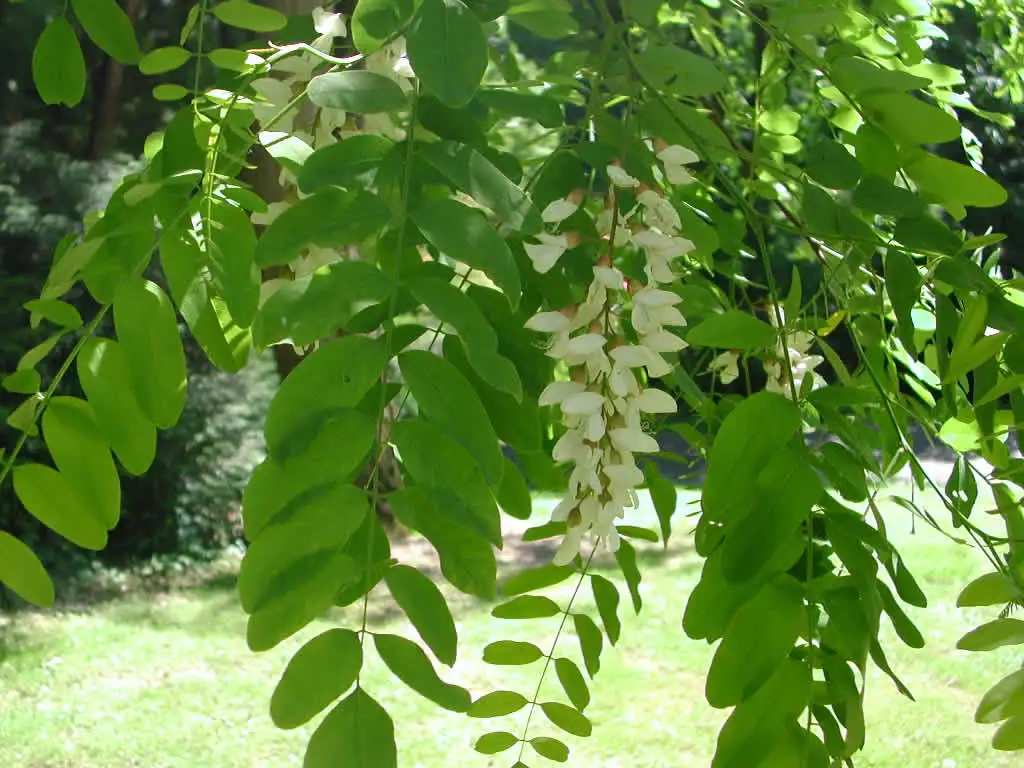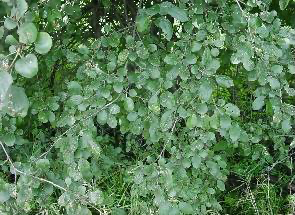Invasive plants are defined as plants that are not native to an environment that, once introduced and established, quickly reproduce and spread, causing harm to the environment, economy, or human health.
At Landis we encounter a few common invasive species: common buckthorn (Rhamnus cathartica), shrub honeysuckle (Lonicera maackii and tatarica), and black locust (Robiniapseudoacacia). The staff at Landis use a number of techniques to control these plants without the use of herbicides. Depending on the area they’ve invaded, different strategies are utilized. No one-size-fits-all treatment is likely to work.
Common buckthorn is native to Europe, northwest Africa, and western Asia. It was commonly used as a landscape plant in the early 19th Century. It was introduced to Landis by the Arboretum’s founder Fred Lape. Current director Fred Breglia explained that looking back at Lape’s own horticultural entries, there were already signs of buckthorn’s incredible ability to spread. “Common buckthorn is such an issue for us here at Landis because of its shade tolerance and [because] it disrupts and displaces the natural apex trees of this biome,” Breglia explained. The grounds crew repeatedly cuts and pulls buckthorn wherever and whenever possible, but its complete elimination is unlikely.
Shrub honeysuckles are less of an issue because they thrive in disturbed, full sun habitats, which are less common at Landis. They are, however, a major issue in local suburban and rural landscapes. Native to temperate and eastern Asia, Lonicera maackii can form almost monocultural thickets in its preferred habitat. These invasive plants shade out the understory and disrupt native tree, shrub, and wildflower growth. The shrubby plants reproduce readily via rhizome and their berries are consumed and dispersed by our most plentiful animal residents. The grounds crew pulls it whenever possible, taking care to not leave any remnants of root or branch: either can produce a new plant in surprisingly little time. One method after pulling is to smother the area where the plants were removed, using barriers that block sunlight and increase the soil temperature.
Black locust is shade tolerant (though not to the same degree as buckthorn) and can reproduce in such a way that it can form a dense thicket, as does shrub honeysuckle. Black locust is originally native to a few small areas of the southeastern United States, but has been planted as an ornamental on a variety of continents. It has a tendency to sucker; a mature tree can shade out large parts of the understory. This is more of a nuisance plant at Landis, though considerable stands of Robinia exist not far from the Arboretum. These plants are largely cut and the root balls pulled in order to prevent their spread.
You can do your part to help prevent the invasion of these plants by removing them and replacing them with natives. Native plants are much more than a buzzword in the horticultural community: the more we understand the interdependence of the natural world, the more we must stiffen our resolve to replace what we have displaced. Say no to invasive plants!



